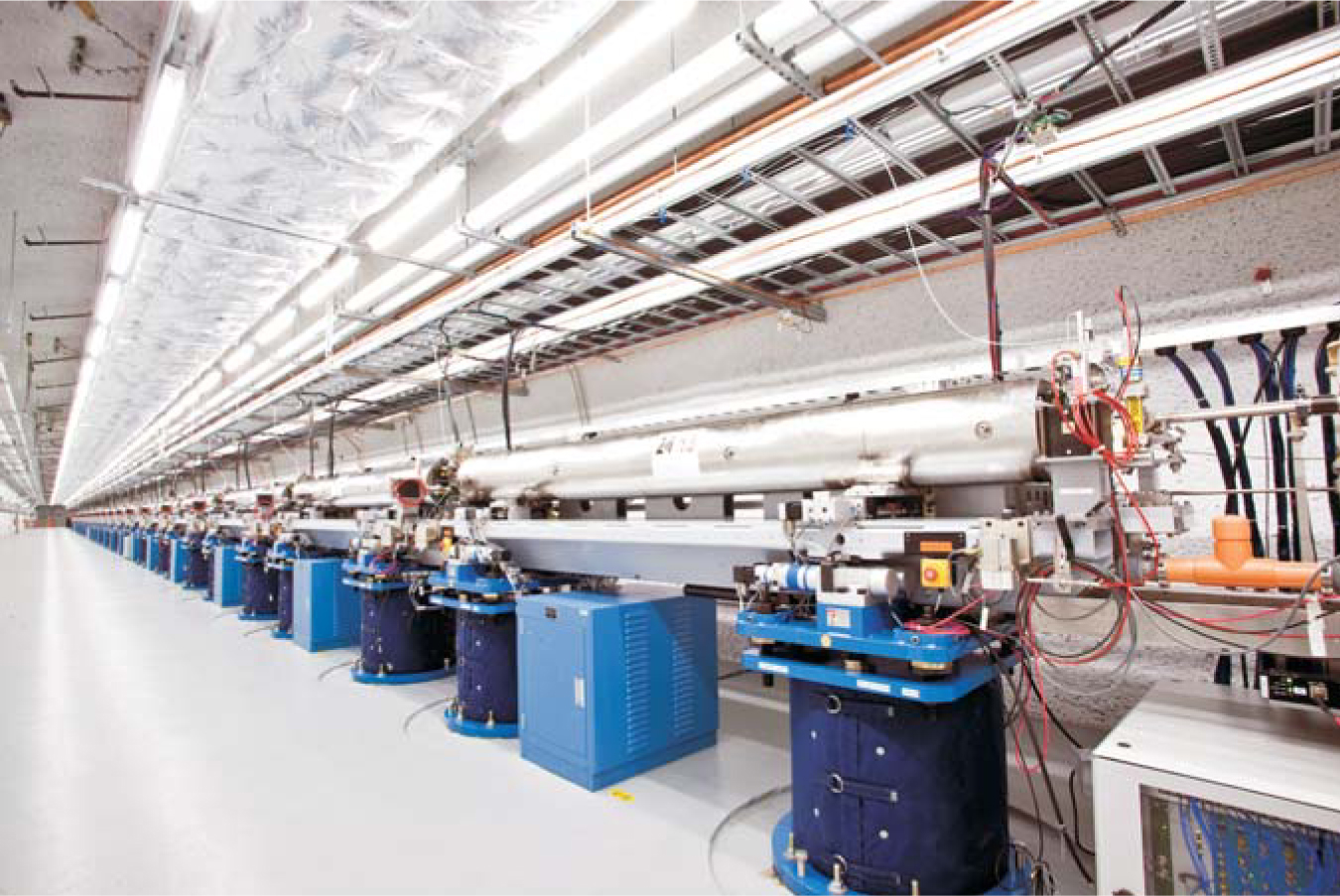SLAC free-electron laser sparkles into life
DOI: 10.1063/1.3212690
“It was a thrill of a lifetime for guys like me,” says John Galayda about this spring’s smooth startup of SLAC’s free-electron laser, the Linac Coherent Light Source (LCLS), whose construction he oversees. “Accelerator guys thought it would be less trouble to lase at 15 Å, and that we would struggle at shorter wavelengths. As it turned out, we lased at 1.5 Å on the first attempt.” The secret to success? “A jillion things had to be done exactly right.”
“It’s very rare that you turn on something of this complexity and it just works. It annihilated our expectations,” says SLAC director Persis Drell. People expected it would take months to optimize the LCLS. “Some 112 meters of undulators, which generate the fields that accelerate electrons so they emit x rays, had to be aligned to 5 microns,” says Drell. “The electron beam had to be high quality, with low emittance. There was technical hurdle after technical hurdle. But they started the lasing campaign, and two hours later it performed just beautifully.”
The on-time startup of the $420 million LCLS is all the more impressive in light of the $8 million budget cut it suffered with the federal budget’s 2007 continuing resolution. To deal with the cut, says Galayda, “we delayed civil construction in the second experimental hall. And we spent every dime we had authority to spend in 2008.” The second experimental hall is scheduled to be completed next July.
Meanwhile, the first experiments, set to begin next month, will focus on interactions of roughly 80-femtosecond pulses with atoms and molecules. “You have a gas of atoms or molecules, fire the laser, and measure the products. The interaction is with the core electrons, and you can kick out not one but two. So it’s multiphoton, nonlinear physics,” says Jochen Schneider, head of the LCLS experimental facilities division. Researchers want to study the resulting molecular explosions. Other experiments will involve coherent imaging of single particles and nano-crystallography, “getting a diffraction pattern from each individual flash, shot by shot, before the sample explodes,” says Schneider. The first set of experiments, he adds, “takes us out to Christmas.”
Veit Elser, a physicist at Cornell University who simulates the interactions of light pulses with proteins, says, “Biologists want to know what a protein looks and acts like in the preexploded form, and that only works if the pulse passes through the protein in a shorter time than it takes to explode.” From studies, he adds, protein explosion is expected within 20–100 fs of exposure to the LCLS x rays. “So we were all nervous. It was great when [the LCLS] announced that, without trying too hard, they’d gotten pulses under 20 fs. If you have the mentality of a physicist, to get this short pulse length is incredible.”
The startup of the LCLS is a milestone in the reinvention of SLAC from primarily a high-energy physics laboratory to a multiprogram one that emphasizes light sources, astroparticle physics, accelerator R&D, and accelerator-based particle physics. “The LCLS was turned on a year to the week after the April 2008 early turning off of the B factory, the last on-site user facility dedicated to particle physics,” says Drell. “The lab has gone through an enormous transition, and it hasn’t ended yet.” The best science, she adds, “will come when we have built a stronger in-house program in photon science.
“Right now we are celebrating,” Drell says. “But a little over a year ago, we had just completed a layoff of 13% of the staff. In the bigger context, the center of the universe for particle physics is going to be CERN, and we are fortunate to have been able to reinvent ourselves so quickly. The LCLS puts us right back at the forefront of physics.”

The undulator system in SLAC’s free-electron laser creates x-ray pulses tens of femtoseconds in duration; each pulse consists of around 1012 photons. The horizontal bar with a lower lip is 1 of 33 titanium undulator magnets, each 3.4 meters long. The dark blue insulated supporting columns are designed for low vibration and thermal stability.
BRAD PLUMMER/SLAC

More about the Authors
Toni Feder. tfeder@aip.org
